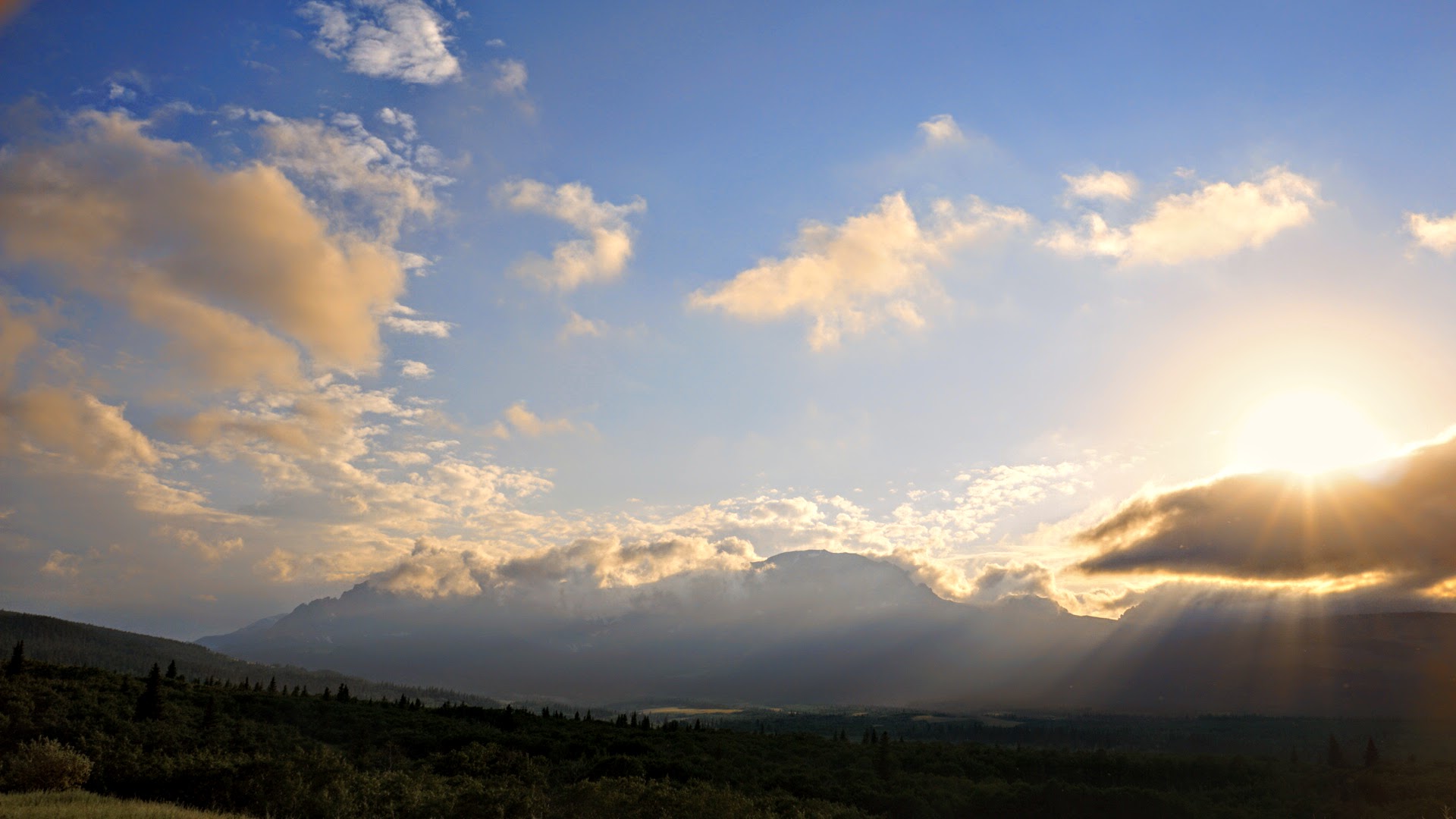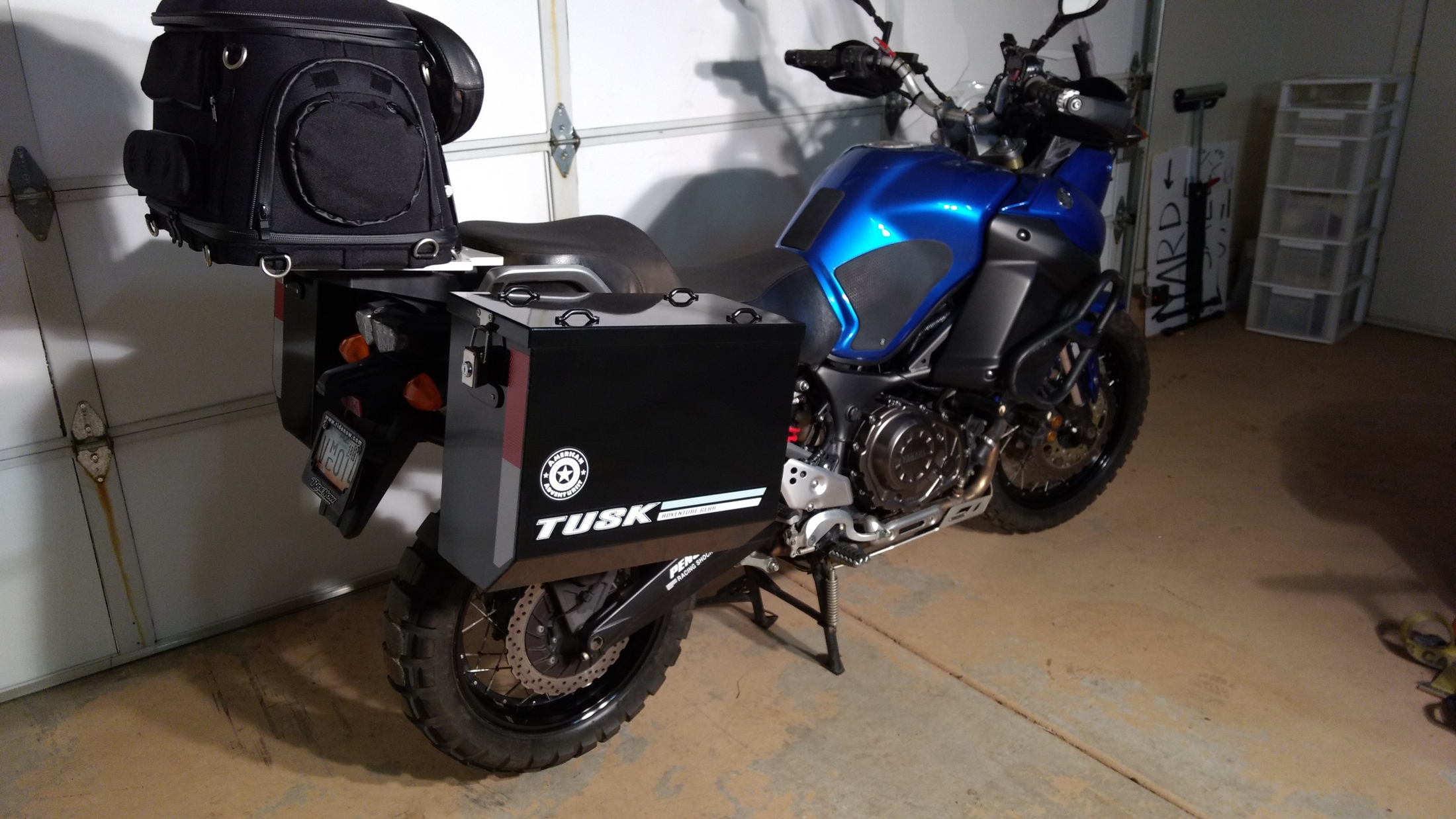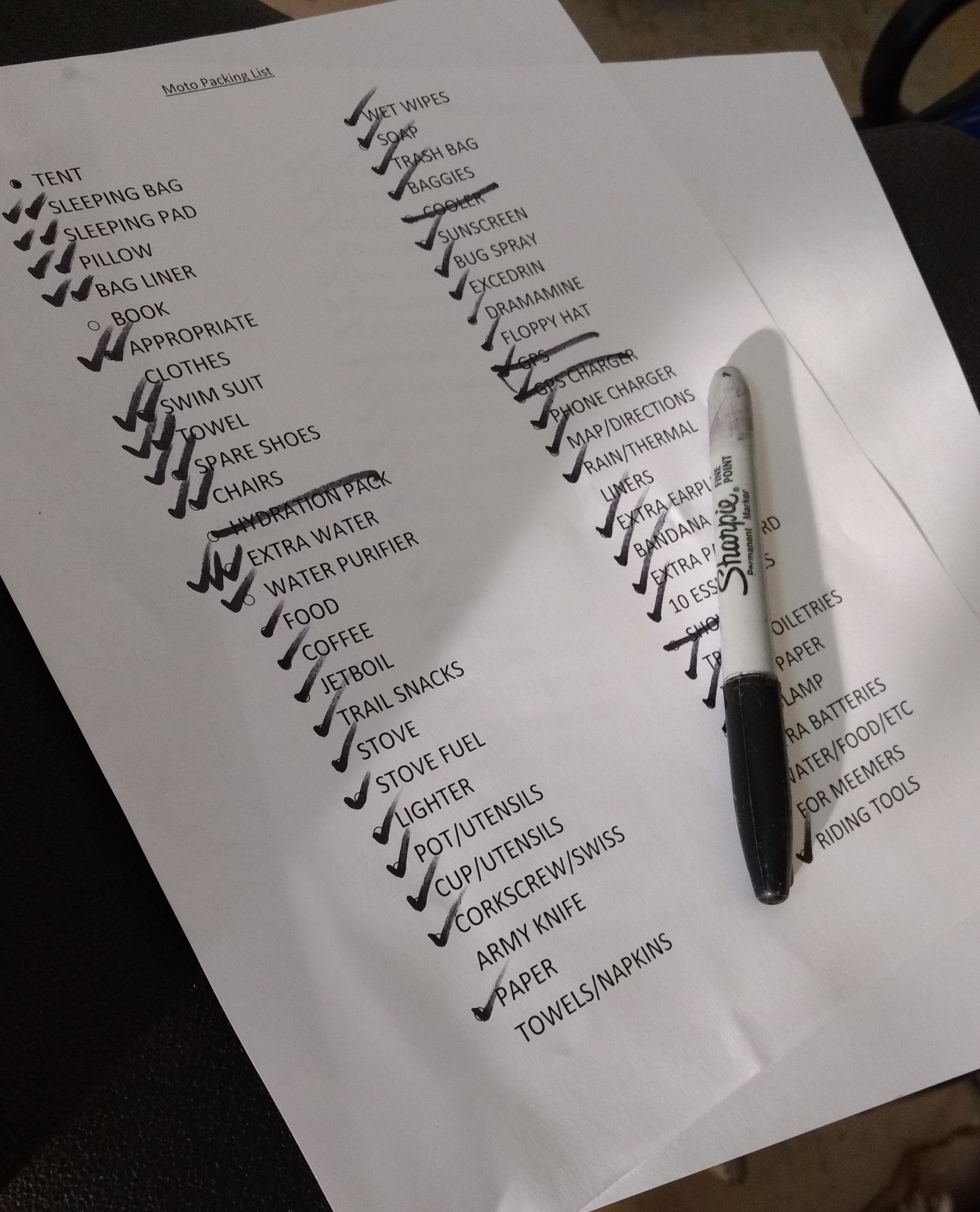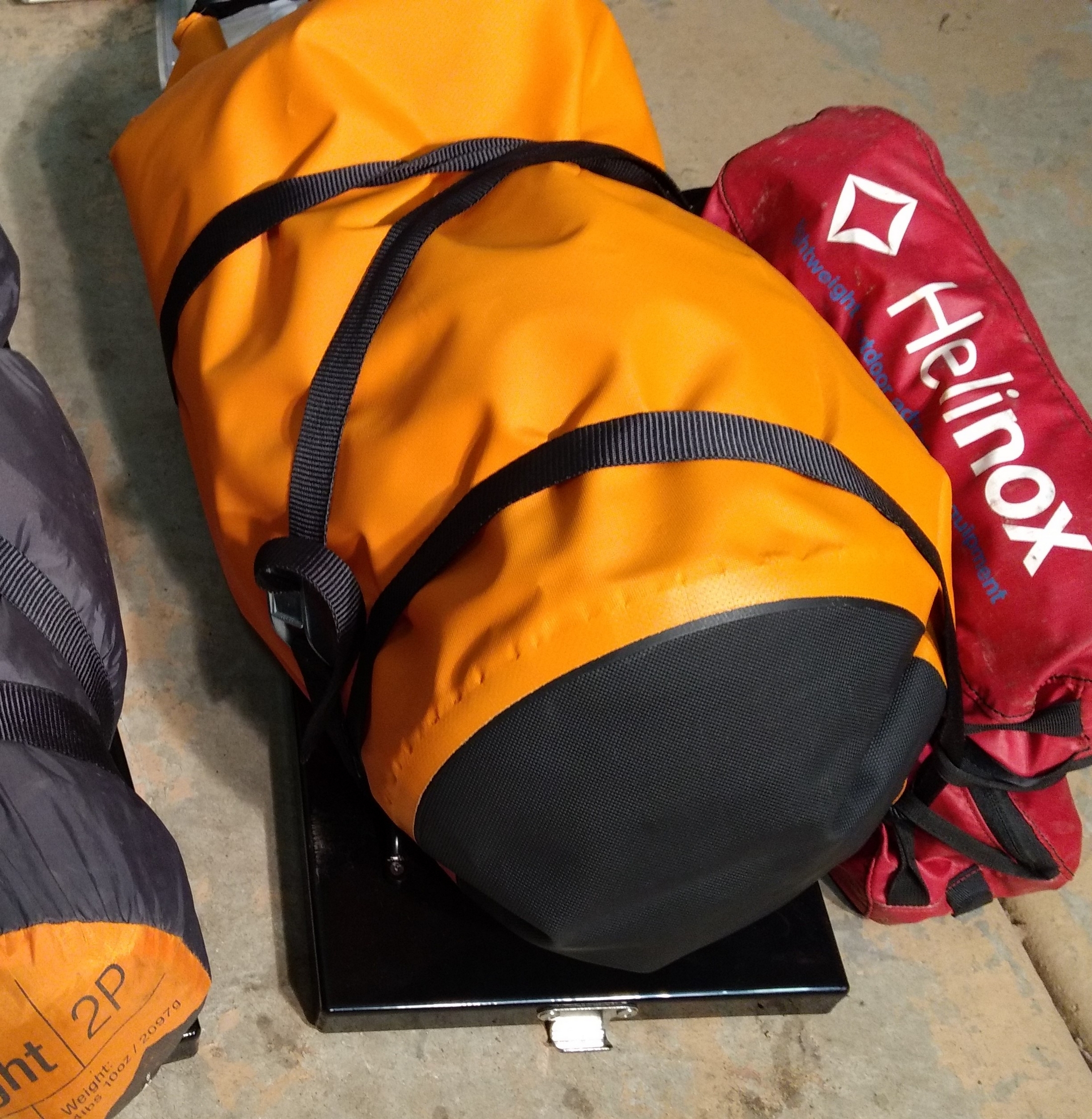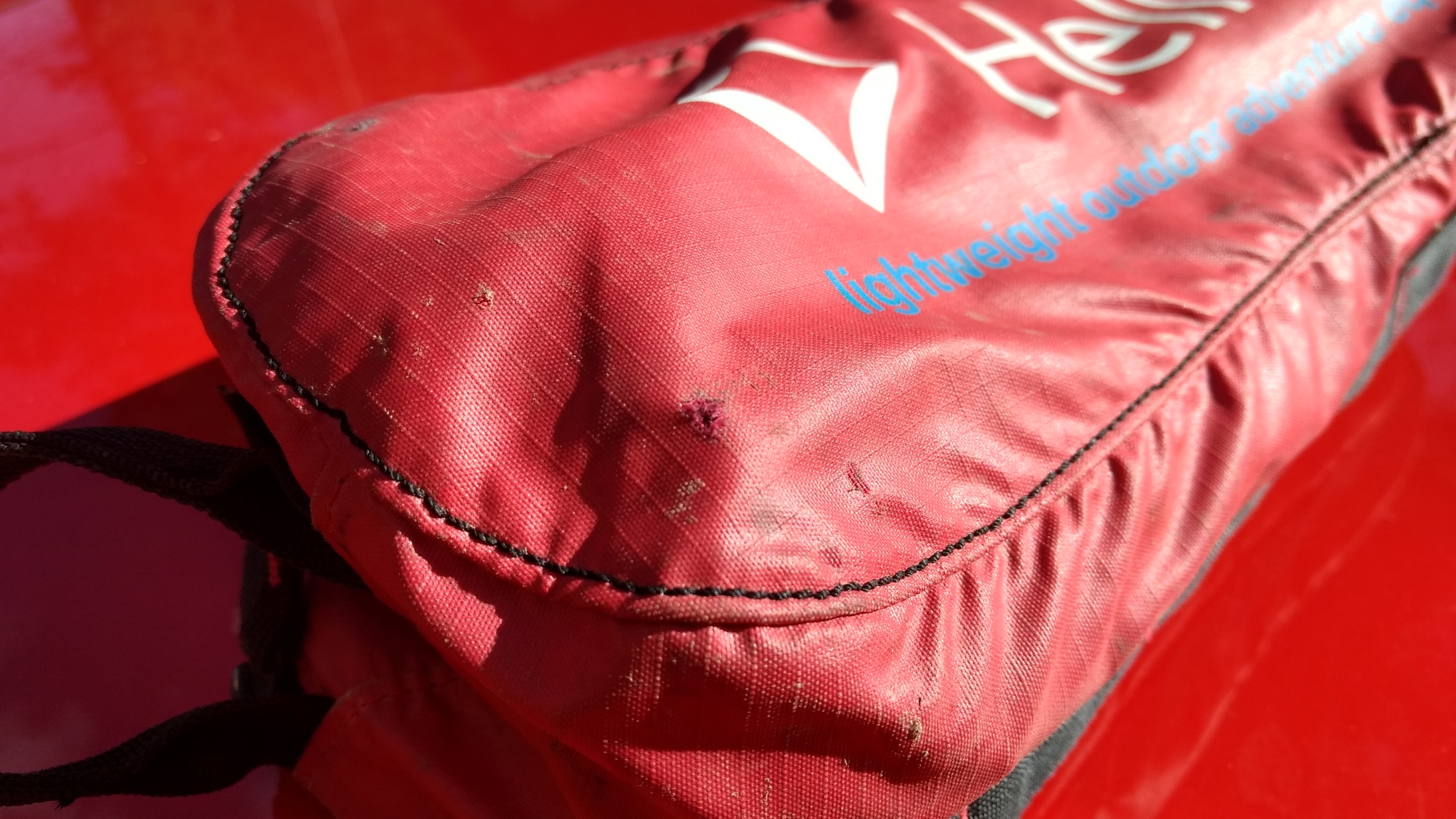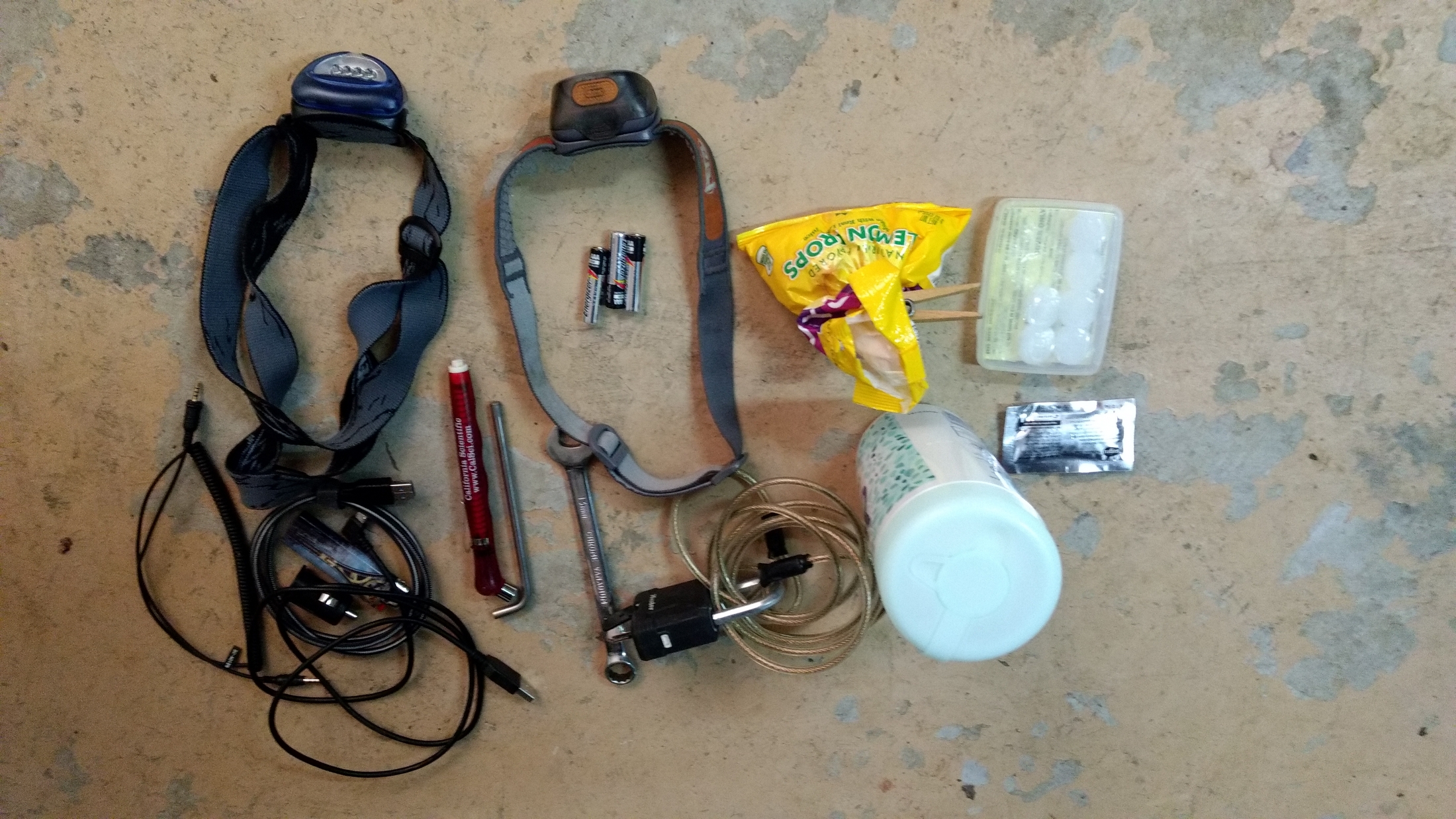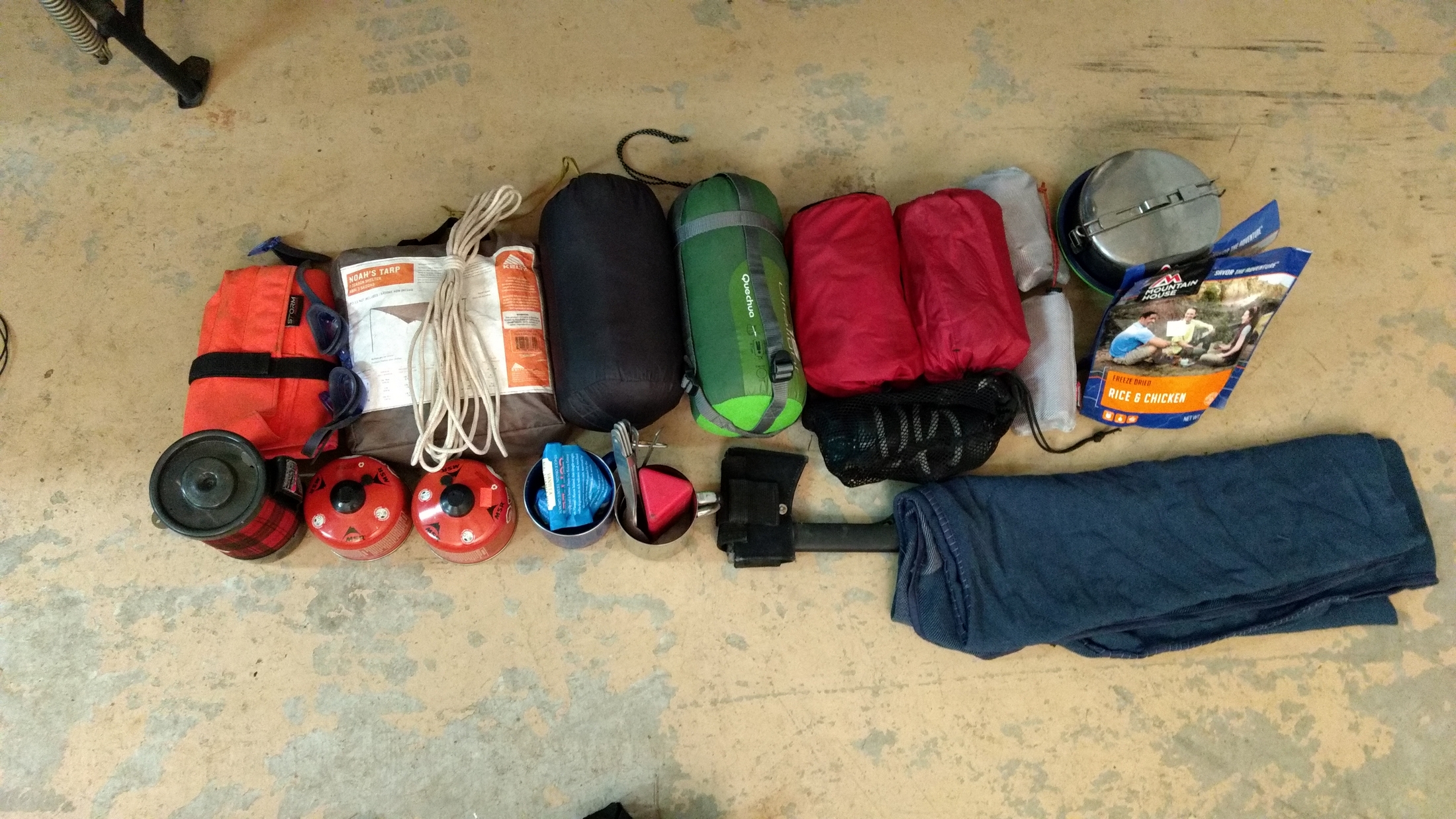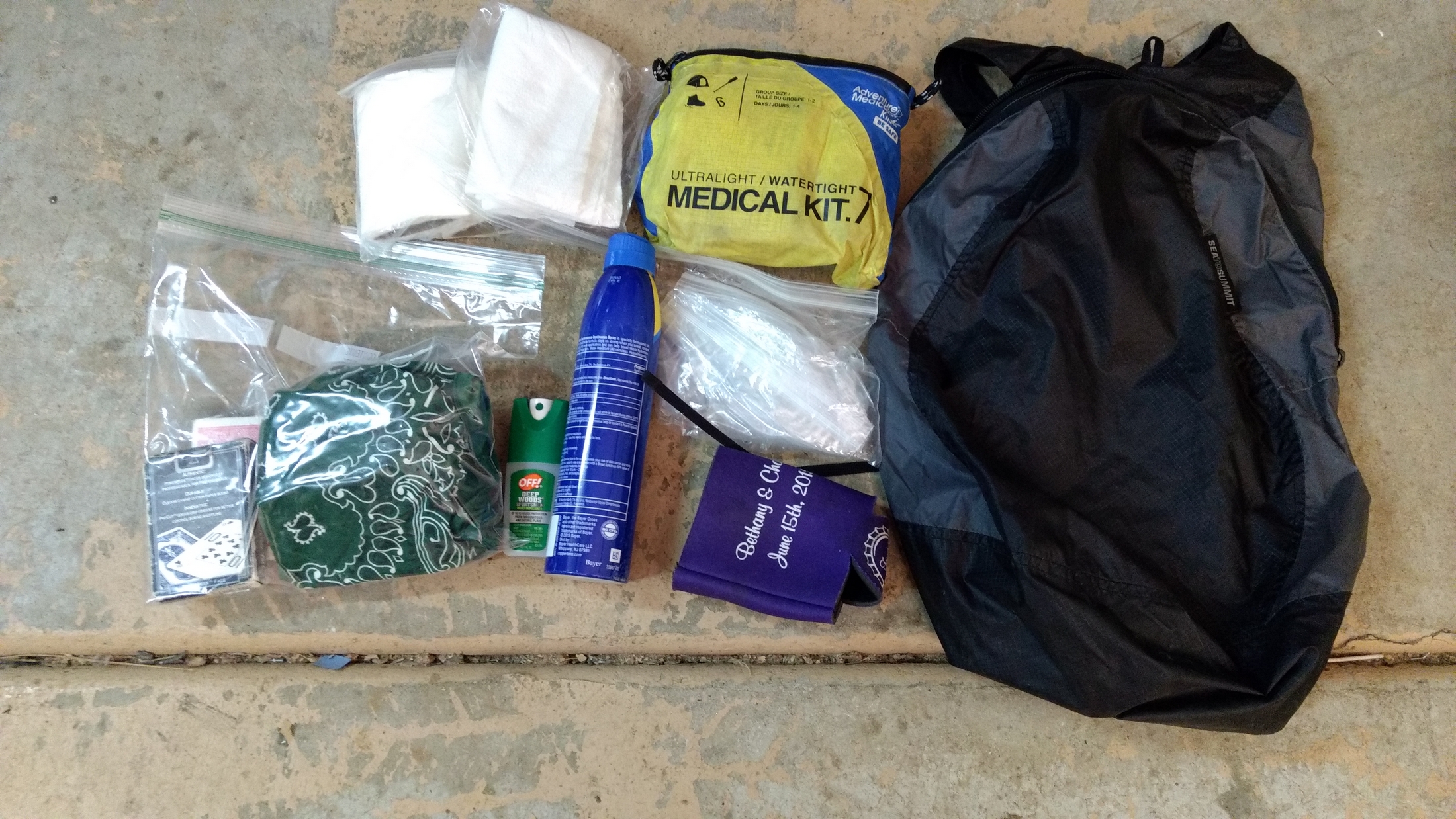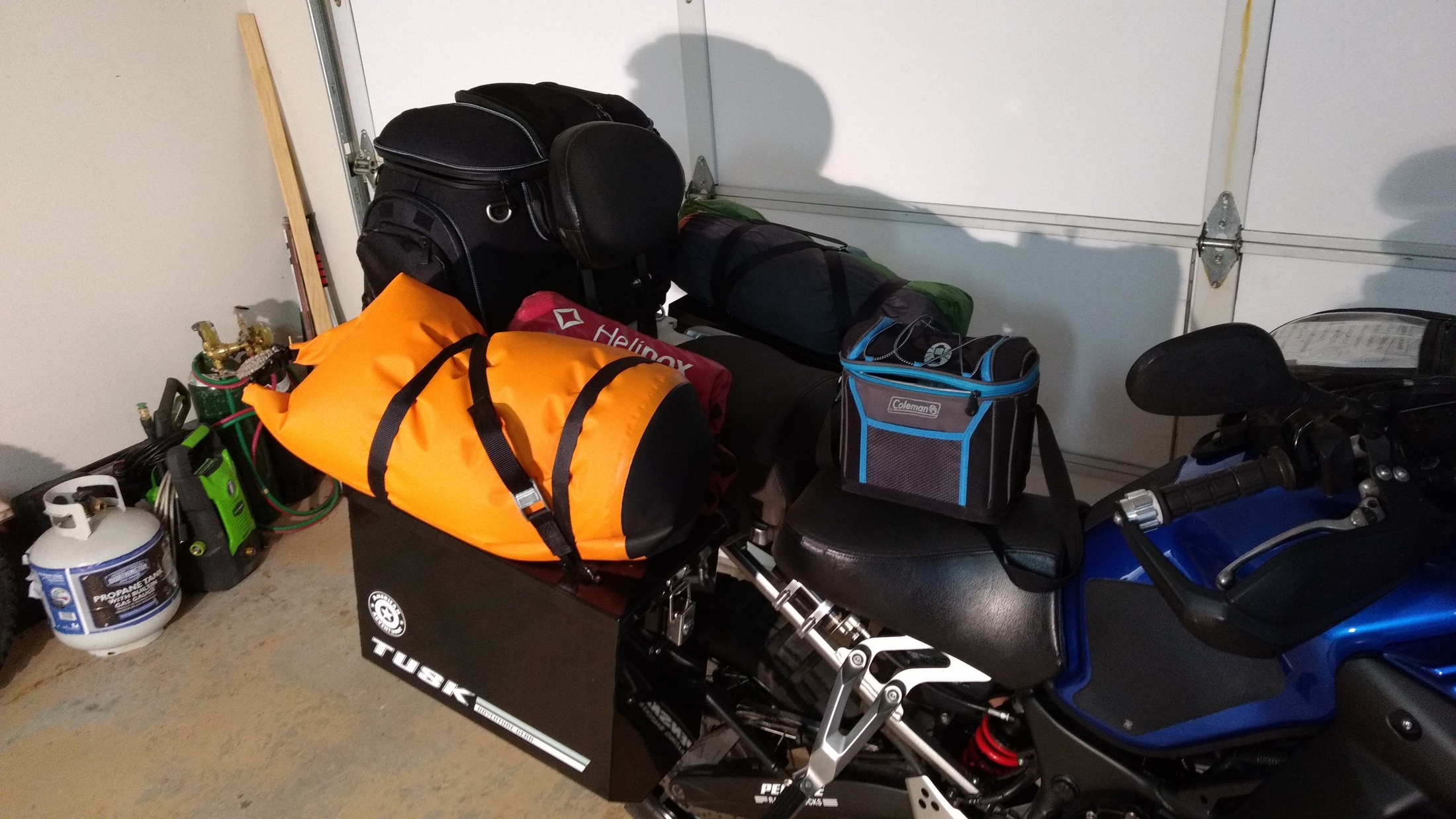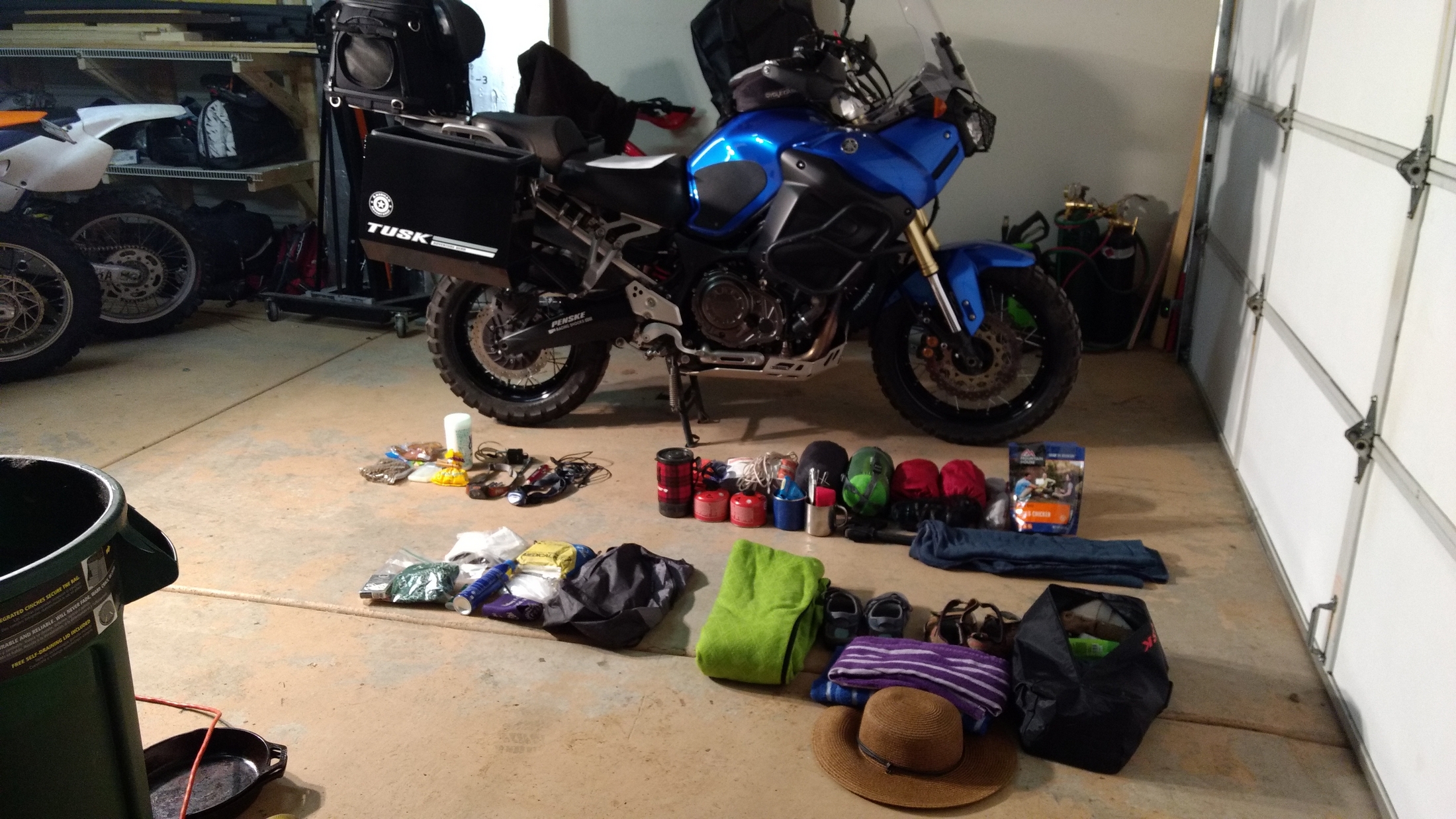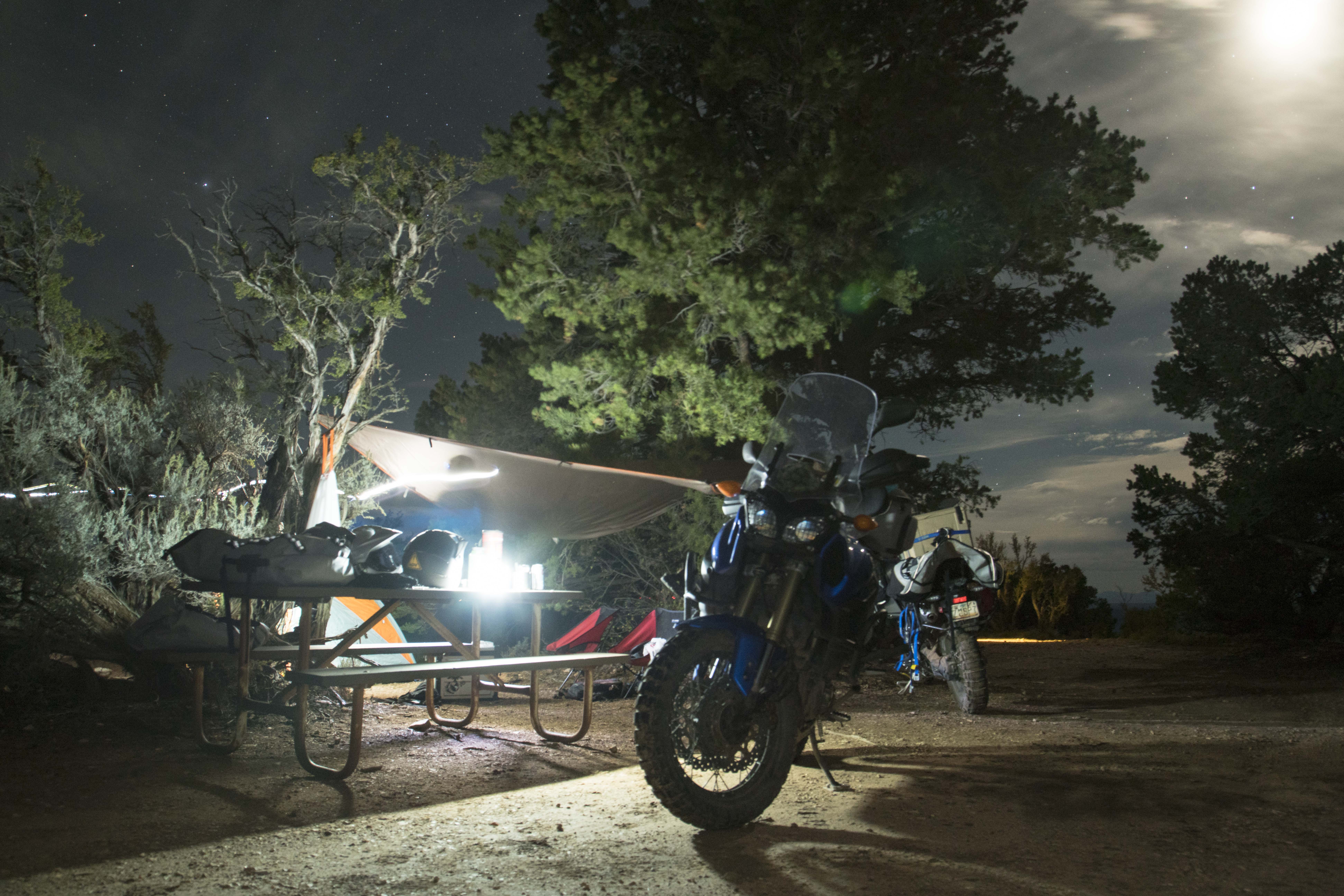Adventure comes in all shapes and sizes. Here in Arizona, it usually involves the search for a secluded waterway where one can attain a reprieve from the baking sun and wash off the dust from the trail.

When most folks think of the deserts in Arizona they imagine a parched landscape full of cacti and broken dreams. They’re right, but there is also a thriving ecology closely packed around a surprising number of lakes and rivers. And when you live at 7,000 feet above sea level in Arizona, it snows the night before you leave for a trip to the desert.

What else can you do, but layer up, press on, and keep a vigilant eye on the forecast? As so many of us today are corralled into set schedules and pre-planned vacations, sometimes simply pushing on is all you can do. Despite the snowflakes falling outside, my wife and I packed our Super Ténéré for a weekend’s adventure to take the back [read: two-lane, twisty-windy, dirt road, and generally awesome] way to Alamo Lake, AZ. There’s a saying in Flagstaff that “If you don’t like the weather, wait five minutes.” And this once again proved true as we jumped on a break in the snowstorm and pointed our bike South toward warmer weather, sun, and miles of twisty-windy two lane goodness.



Our route would take us on two lane roads from Jerome, through Prescott, and toward Bagdad (AZ!), and on toward the middle of nowhere, which as it happens, is near Nothing, AZ. We were so busy enjoying this wonderful ribbon of tarmac, we missed our turn, and were ‘lost’, round 1. After consulting the GPS, we found an alternate route; a 33 mile dirt road that was supposed to be a well maintained, smooth cruise. Not so much. We were lost again, round 2.

Pretty soon, the washouts, sand, and several additional wrong turns had us re-thinking ourselves. “Keep going. There’s a darn lake at the end of this. How far have we gone? Only Three miles! This is going to be a long afternoon…”



Perseverance won the day however, and before too long, we were cooking along in 5th gear on a wide, well-graded dirt highway. Sometimes, all you need to fix the roads is to cross a county line.


As the miles ticked by, we started to get into the groove again. Things were looking up, and we had plenty of daylight, plenty of fuel, and we hadn’t lost our mascot, Tortellini the turtle. (Editor’s note: Tortellini is known to fly out from his perch on the authors Ténéré from time to time. This most commonly happens on rough roads or at high speeds. –Chad) Before we knew it, we were looking for a campsite and changing into our swimsuits. We had made it to Alamo Lake.


After a quick dip in the lake, some warm food, and making a campfire, we were watching another world-class Arizona sunset and reflecting on the day.

It seems like the farther I can get away from civilization, and the closer I can get to undeveloped wilderness, the more content I am. The trivialities of life fade into the background as I soak in my surroundings. I’m dusty, I’m hot, I’m exhausted and I’m away from everything that makes home so comfortable, yet I feel more content and more joyful than I do almost anywhere else. After all, I’ve got my wife, my dog, and my motorcycle – what more could I ask for?



